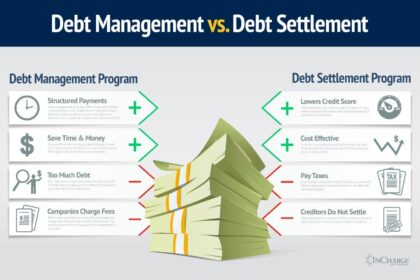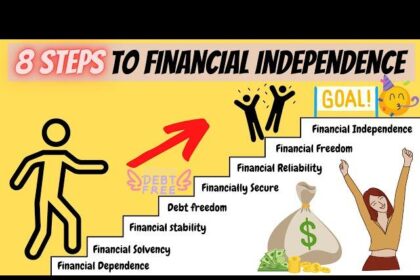In a world where consumerism reigns supreme and the latest gadgets beckon from every corner, the art of frugal living often gets lost in the shuffle. Yet, as economic shifts and global challenges remind us of the importance of mindful spending, the principles of simplicity and resourcefulness are poised for a comeback. Embracing frugality doesn’t mean sacrificing quality or joy; rather, it’s an invitation to creatively navigate our resources and redefine our relationship with money. In this article, we’ll explore a treasure trove of frugal living tips that can empower you to stretch your dollars further than you ever thought possible, transforming your lifestyle into one that celebrates sustainability, creativity, and, ultimately, freedom. Join us as we embark on a journey toward financial well-being, where each practical tip serves as a stepping stone toward a more fulfilling and economically savvy life.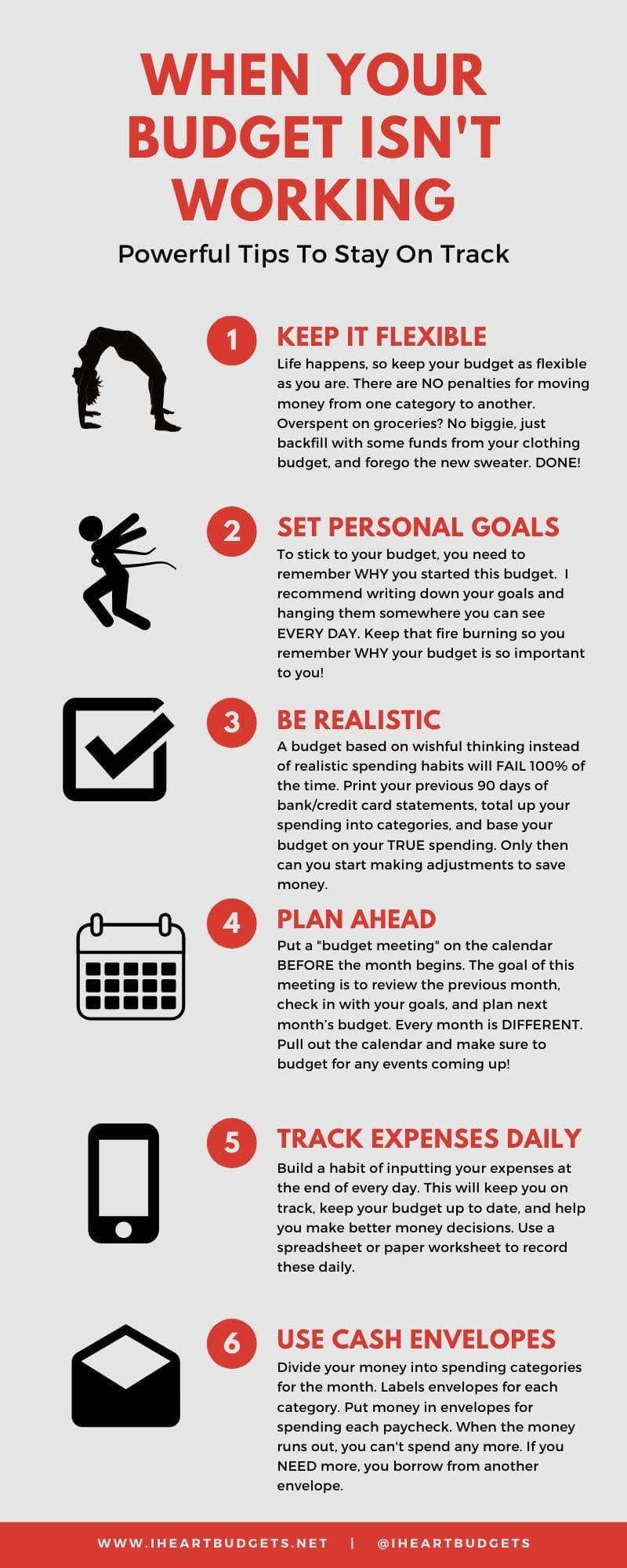
Budgeting Tips
Creating a strong financial foundation starts with an effective plan. Begin by tracking your income and expenses meticulously. Use tools like budgeting apps or simple spreadsheets to get a visual representation of where your money is going. Consider categorizing your expenses into essentials and non-essentials, which can help you identify areas where you can cut back. Here are some practical suggestions to enhance your budgeting process:
- Set clear financial goals such as saving for a vacation, building an emergency fund, or paying off debt.
- Establish a monthly budget that allocates funds to both necessary and discretionary spending.
- Review your budget regularly and adjust as needed to reflect changes in your lifestyle or income.
Moreover, embrace a mindset of frugality that complements your budget. Small changes can lead to significant savings over time, and it’s all about being mindful about your purchases. Focus on minimizing discretionary spending and consider implementing these money-saving habits:
| Habit | Benefit |
|---|---|
| Meal planning | Reduces food waste and lowers grocery bills |
| Buying in bulk | Can reduce unit costs for frequently used items |
| Using coupons | Provides discounts on regular purchases, boosting savings |
| DIY projects | Cost-effective alternative to hiring professionals |
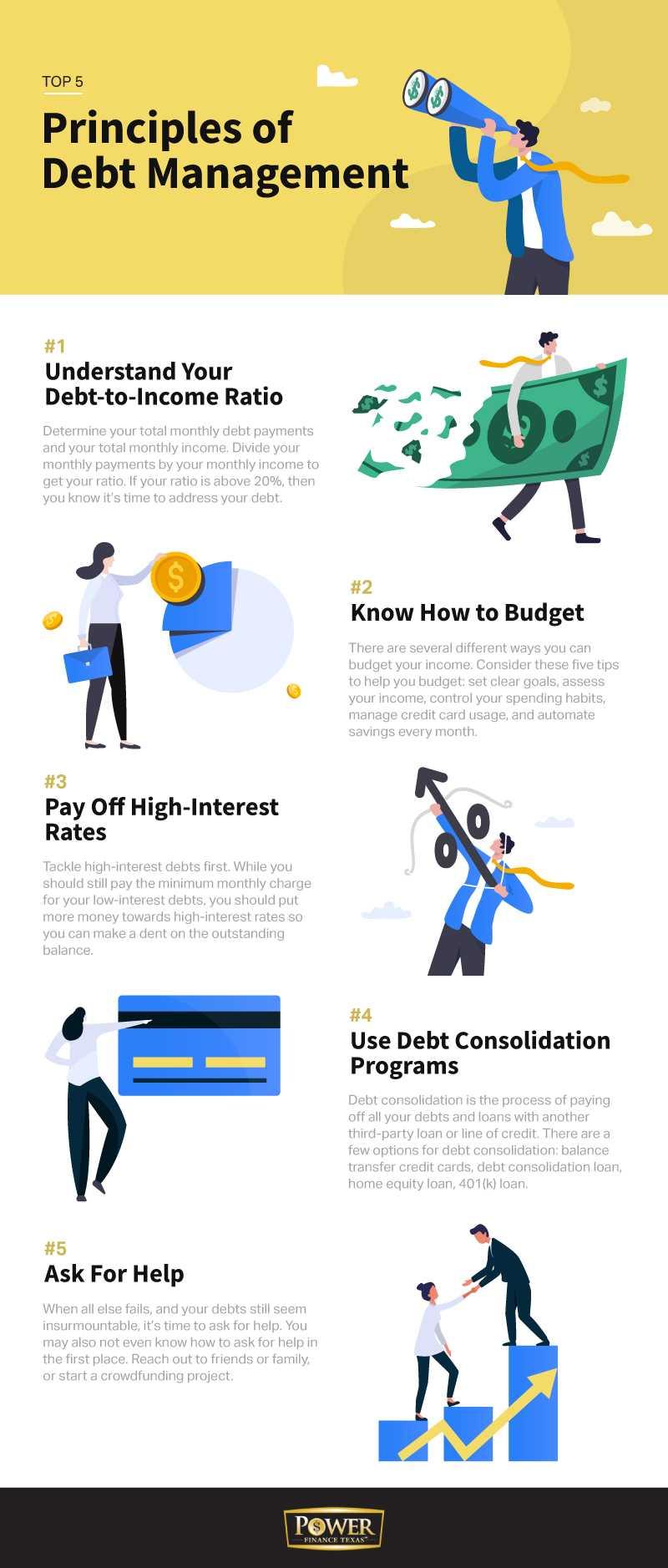
Debt Management
Managing debt effectively is crucial to enjoying a truly frugal lifestyle. One of the most impactful steps you can take is to create a budget that prioritizes your essential expenses while allocating funds for debt repayment. Start by listing all your debts, including credit cards, personal loans, and any other financial obligations. Then, categorize them based on interest rates and due dates. This will help you identify which debts to focus on first, enabling you to save money on interest in the long run.
Another strategic approach is to adopt the debt snowball or avalanche method. The snowball method involves paying off your smallest debts first for a quick psychological win, while the avalanche method focuses on attacking the highest-interest debts first to save more money over time. Consider consolidating high-interest debts into a lower-interest option, which can also simplify your payment process. Here’s a quick comparison table to visualize these methods:
| Method | Description | Best For |
|---|---|---|
| Snowball | Focus on paying off smaller debts first. | Those needing motivation and quick wins. |
| Avalanche | Pay off debts with the highest interest rates first. | Those looking to save money on interest. |

Saving for Retirement
When it comes to preparing for the future, setting aside funds for retirement can be a daunting task, especially if you’re living a frugal lifestyle. However, with a few strategic moves, you can ensure that your golden years are secure without sacrificing your current financial health. Start by creating a budget that prioritizes savings. This can include:
- Automating contributions: Set up automatic transfers to your retirement accounts each month.
- Utilizing workplace benefits: If your employer offers a retirement plan with matching contributions, make sure to take full advantage.
- Investing wisely: Research low-cost index funds or ETFs that track the market without high fees.
Additionally, it’s vital to keep track of your progress and make adjustments when necessary. A simple way to visualize your savings goals is by using a table to track your contributions over time. Here is a basic example:
| Year | Contribution ($) | Projected Growth ($) |
|---|---|---|
| 2023 | 5,000 | 500 |
| 2024 | 5,500 | 600 |
| 2025 | 6,000 | 700 |
Use tools like retirement calculators to simulate various scenarios and keep yourself motivated as you watch your nest egg grow. Remember, every little bit counts, and with a consistent effort toward frugal living and smart saving, you can lay a solid foundation for a comfortable retirement.
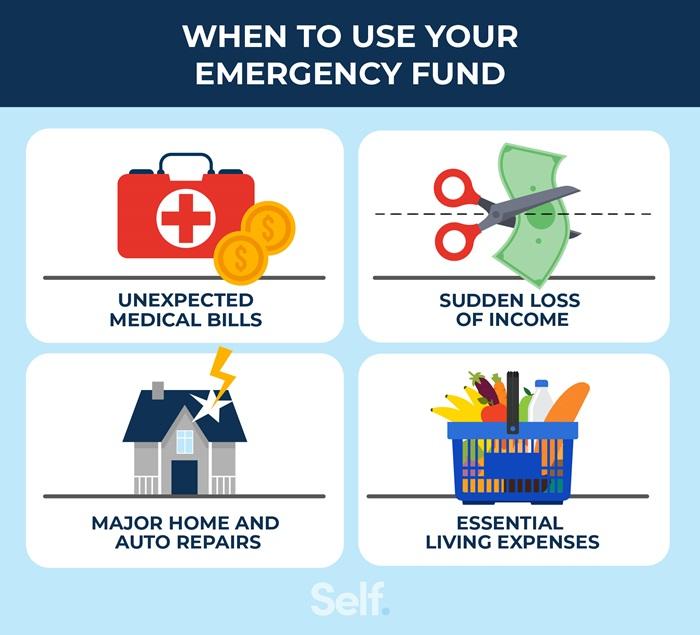
Emergency Fund Planning
Life is unpredictable, and having a financial cushion can make all the difference during tough times. Establishing a stash of cash for unforeseen expenses is not just smart; it’s essential. To create an emergency fund, you might consider the 50/30/20 rule, where 50% of your income goes toward needs, 30% toward wants, and 20% toward savings. This method can help you allocate a portion of your income specifically to your emergency reserves. Additionally, consider setting up a high-yield savings account where your funds can grow a little while remaining easily accessible.
When aiming to build your emergency fund, think about setting achievable goals. Start by determining how much you’d like to save, taking into account factors such as monthly expenses and personal circumstances. Here are some strategies to bolster your fund:
- Automate Savings: Set up automatic transfers to your emergency fund each payday.
- Cut Unnecessary Expenses: Review your monthly subscriptions and eliminate those you can live without.
- Boost Income: Look for side hustles or freelance opportunities that can help you increase your savings faster.
Tracking your progress can also provide motivation. Consider using a simple table to monitor your savings growth:
| Month | Amount Saved | Total Fund |
|---|---|---|
| January | $100 | $100 |
| February | $150 | $250 |
| March | $200 | $450 |
Tracking small victories can keep you focused and motivated on your journey to financial stability!
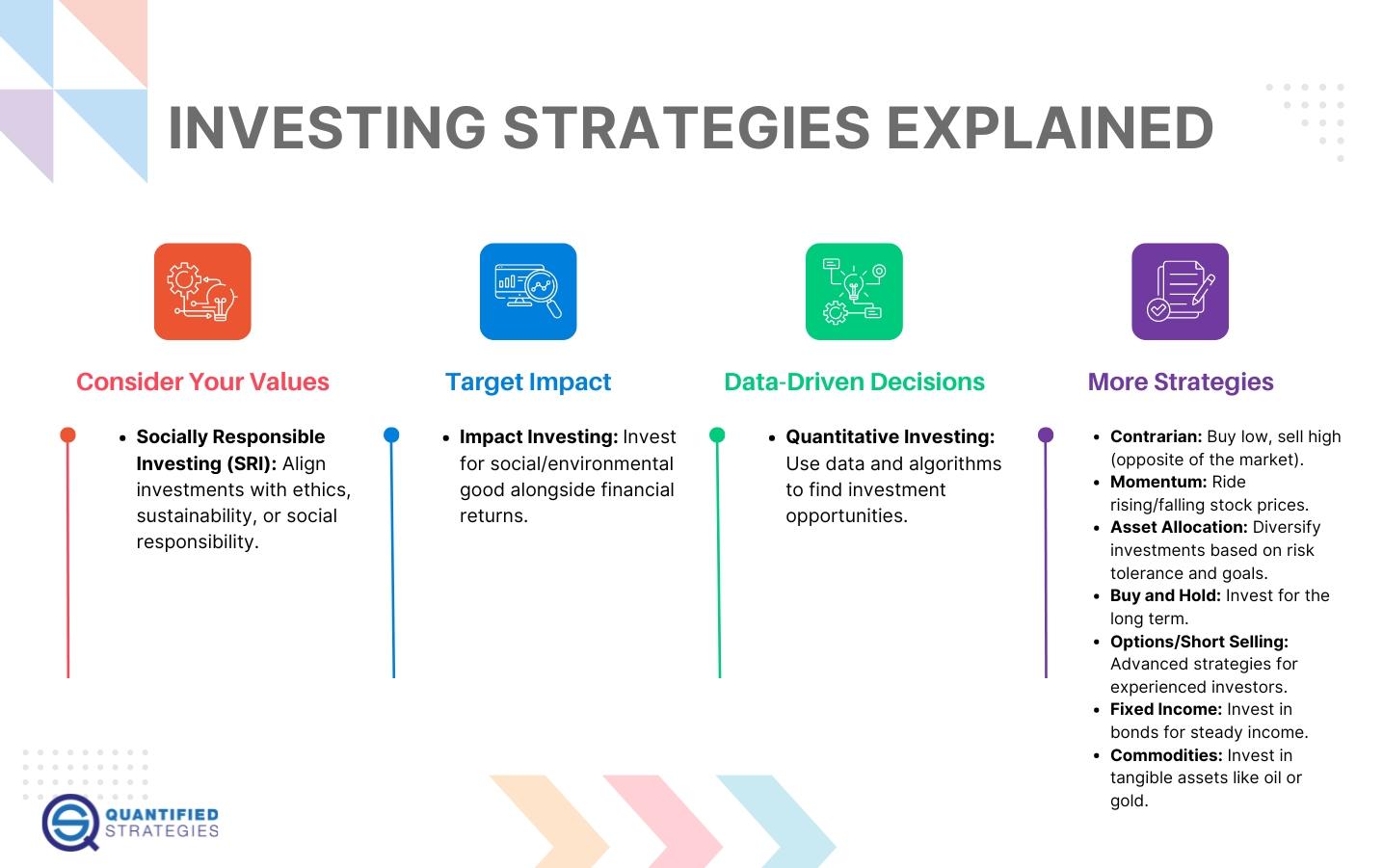
Investment Strategies
Embracing a lifestyle centered around frugal living can open up opportunities for smart investments that yield long-term benefits. Setting aside a portion of your savings for investment can create a financial cushion while still allowing you to enjoy a mindful way of life. Consider the following approaches to bolstering your investment portfolio:
- Index Funds: These low-cost, passive investment options track market indices and provide diversification without high fees.
- Real Estate Crowdfunding: Invest in real estate without the hassle of management, allowing you to own a fraction of various properties.
- Robo-Advisors: Automate your investing with algorithms that manage your portfolio according to your risk tolerance.
Examine the possibility of creating multiple streams of income through side hustles or dividend-producing investments. Utilizing resources that require minimal costs but provide lifelong benefits can be an empowering strategy. Below is a simplified comparison of common investment avenues for frugal living enthusiasts:
| Investment Type | Initial Cost | Risk Level |
|---|---|---|
| Index Funds | Low | Moderate |
| Real Estate Crowdfunding | Medium | Moderate |
| Peer-to-Peer Lending | Low | High |

Stock Market Investing
Investing in the stock market can be an excellent way to build wealth over time, especially for those committed to frugal living. By allocating a portion of your monthly budget towards investments, you may find that your savings can grow significantly, providing financial security in the long run. Consider diversifying your investment portfolio by exploring various sectors and asset classes. Some key strategies might include:
- Index Funds: Low-cost and low-maintenance options that mirror market performance.
- Dividend Stocks: Profitable companies that distribute earnings to shareholders, providing a steady income stream.
- Exchange-Traded Funds (ETFs): A cost-effective way to gain exposure to a range of stocks.
As you venture into the stock market, it’s essential to educate yourself on basic investment principles and stay updated on market trends. Keep a close eye on your spending habits; every dollar saved can contribute to your investment fund. Consider setting up automatic transfers to your investment account, ensuring that you prioritize your financial goals. Here’s a simple table to help you track some potential investing areas along with their risk levels:
| Investment Type | Risk Level |
|---|---|
| Index Funds | Low |
| Dividend Stocks | Medium |
| Cryptocurrencies | High |

Real Estate Investment
Investing in real estate can be a viable strategy for building wealth over time, especially when approached with a frugal mindset. By focusing on properties that offer good value rather than chasing trendy markets, you can stretch your investment dollars further. Consider looking into foreclosures, fixer-uppers, or properties in up-and-coming neighborhoods. These options can often be purchased at a lower price point, allowing you to either flip them for profit or rent them out for passive income.
When evaluating potential investments, always keep an eye on key metrics that can affect your bottom line. Utilize an easy comparison chart to weigh your options:
| Property Type | Purchase Price | Estimated Rental Income | Location Potential |
|---|---|---|---|
| Foreclosure | $120,000 | $1,200/month | High |
| Fixer-Upper | $90,000 | $900/month | Medium |
| Up-and-Coming Neighborhood | $150,000 | $1,500/month | Very High |
Additionally, always factor in potential renovation costs and ongoing maintenance. By maintaining a frugal yet informed approach, you can make savvy decisions that lead to profitable s without burdening your finances.
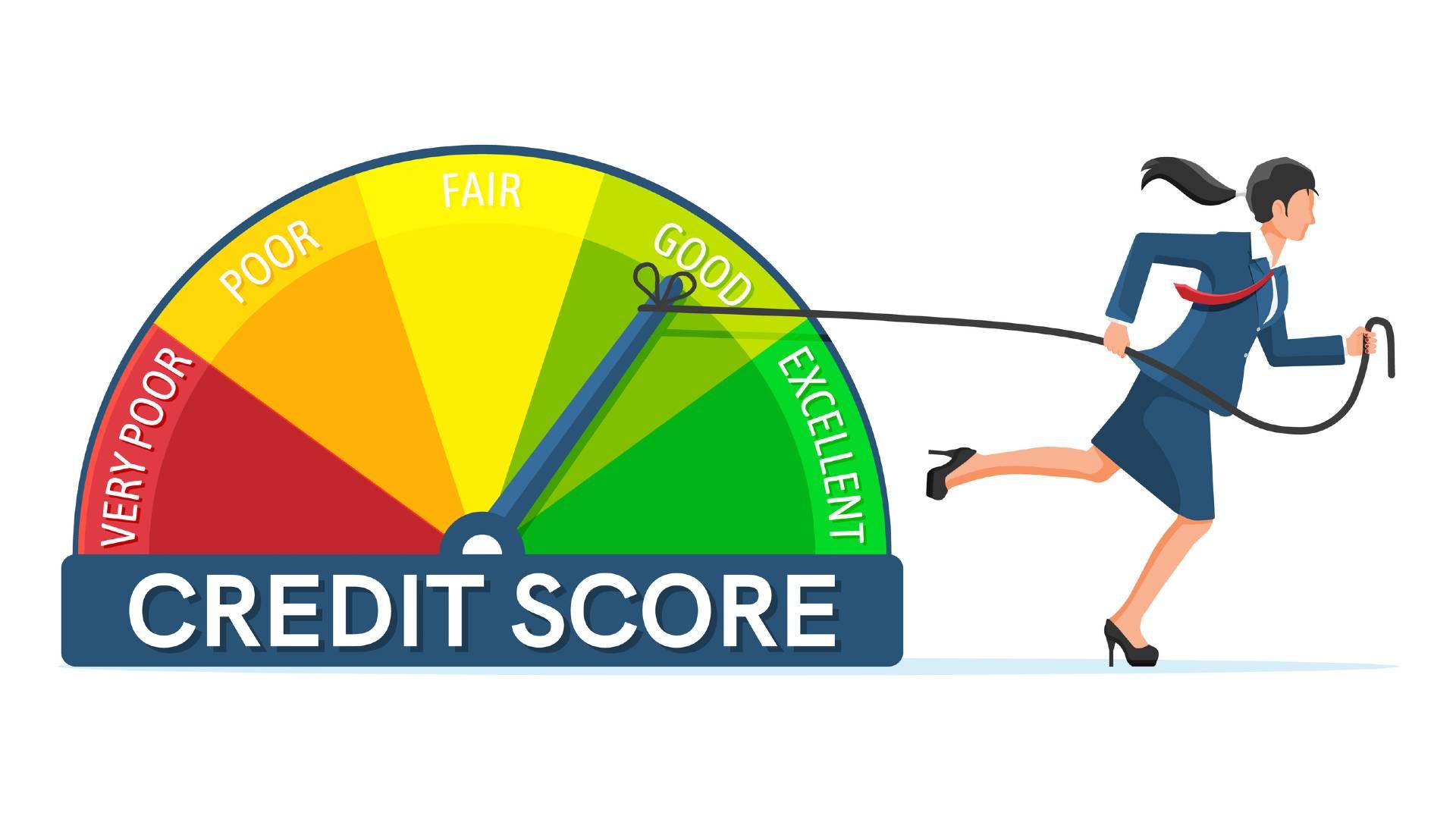
Credit Score Improvement
Improving your credit score can be one of the most impactful financial moves you make. Start by ensuring that your payments are made on time, as payment history accounts for a large portion of your credit score. Create a budget that prioritizes these essential payments, and consider setting up automatic payments or reminders to avoid any late fees. If you find yourself struggling, communicate with your creditors—they may offer hardship programs or flexible payment options that can help you stay on track.
Another strategy for enhancing your credit score is to keep your credit utilization ratio below 30% of your total credit limit. This means if you have a total limit of $10,000, aim to use no more than $3,000 at any time. You can accomplish this by either reducing spending on credit cards or increasing your credit limits, provided it aligns with responsible spending habits. Additionally, review your credit report for inaccuracies; disputing erroneous entries can lead to a quick score boost. Here are some key points to remember:
- Check your credit report regularly for errors.
- Pay down existing debt to improve utilization.
- Limit hard inquiries on your credit report.
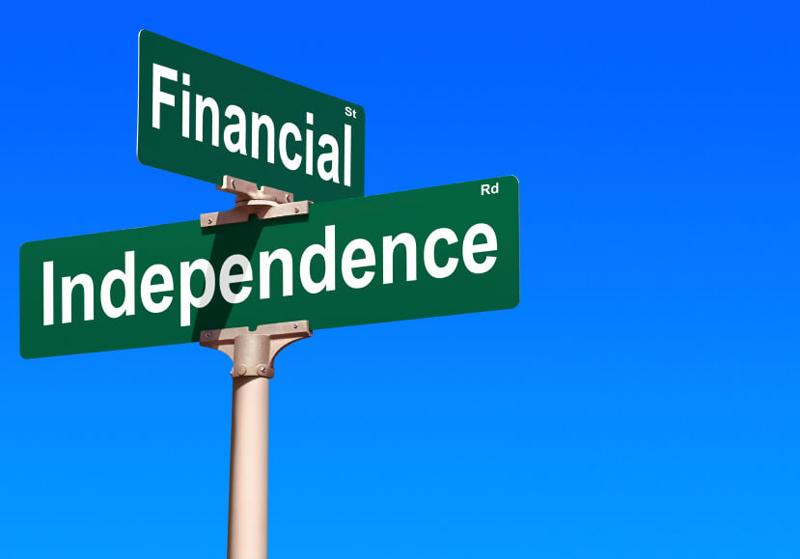
Financial Independence
Embracing a frugal lifestyle can be the key to unlocking . It’s about making conscious choices that lead to a simpler life with significant savings. The essence of frugality lies in the little habits you cultivate daily. Consider the following strategies to cut unnecessary costs:
- Create a Budget: Tracking your income and expenses helps identify where your money goes.
- Practice Meal Planning: This not only cuts grocery costs but also minimizes food waste.
- Utilize Free Resources: Libraries, community events, and online knowledge platforms can provide valuable entertainment and education at no cost.
- Repurpose and Repair: Before discarding items, think of creative ways to repair or repurpose them.
Additionally, cultivating a mindset geared towards frugality can significantly affect your financial journey. By embracing sustainable habits, you not only conserve your finances but also contribute positively to the environment. Here’s a simple comparison of the costs associated with eating out versus home cooking:
| Expense Category | Cost per Meal |
|---|---|
| Dining Out | $15-$25 |
| Home-Cooked Meal | $3-$7 |
By choosing home-cooked meals, not only do you save money, but you also have control over your ingredients, which can lead to healthier eating habits. Small, deliberate changes can enhance your journey towards financial stability and independence, allowing you to thrive rather than just survive.

Passive Income Streams
To enhance your financial stability while embracing a frugal lifestyle, exploring various income streams can be a game changer. Passive income opportunities allow you to earn money without the constant grind. Consider options such as:
- Dividend Stocks: Invest in shares that pay dividends to boost your earnings portfolio over time.
- Real Estate Investments: Rental properties can provide consistent cash flow with regular maintenance.
- Peer-to-Peer Lending: Engage in lending platforms where you can earn interest on loans to individuals or businesses.
- Affiliate Marketing: Promote products through your blog or social media, earning a commission for sales generated through your links.
Additionally, consider the potential of creating and selling digital products. This not only reduces upfront costs but also caters to a global market. Some ideas include:
| Digital Products | Benefits |
|---|---|
| eBooks | Low production costs; evergreen content. |
| Online Courses | Ability to earn repeatedly as new students enroll. |
| Printables | Quick to create and can appeal to various niches. |
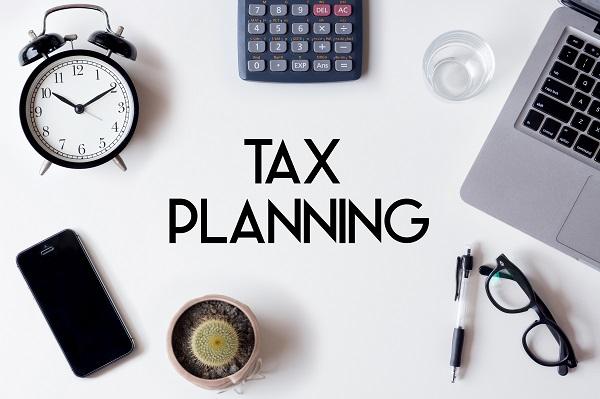
Tax Planning
Engaging in smart fiscal habits not only results in immediate savings but can also significantly reduce your tax burden. To maximize your tax benefits, consider maintaining thorough records related to your expenditures. Utilize digital tools to organize receipts and invoices, making them easily accessible come tax season. This habit enables you to identify deductibles that may often go unnoticed. Key areas to focus on include:
- Charitable Donations: Keep track of all contributions for possible deductions.
- Health-Related Expenses: Document medical expenses that may qualify for deductions.
- Home Office Deductions: If you work from home, calculate a percentage of your home expenses that relate to your workspace.
In addition to meticulous record-keeping, explore tax-advantaged accounts such as Health Savings Accounts (HSAs) or Flexible Spending Accounts (FSAs). These accounts not only support your savings goals but also offer unique tax benefits, making them an essential part of a frugal lifestyle. To illustrate the potential impact, consider the following comparison table:
| Account Type | Tax Benefit | Contribution Limits |
|---|---|---|
| Health Savings Account (HSA) | Tax-deductible contributions, tax-free growth, and tax-free withdrawals for qualified medical expenses | $3,650 (individual), $7,300 (family) for 2023 |
| Flexible Spending Account (FSA) | Pre-tax contributions reduce taxable income | $3,050 for healthcare (2023) |

Retirement Accounts (IRA, 401k)
When navigating the complexities of frugal living, it’s vital to harness the power of retirement accounts like IRAs and 401(k)s. These financial vehicles not only help in building a secure future but also offer tax advantages that can be immensely beneficial in the long run. Here are some strategies to make the most of your retirement savings:
- Maximize Employer Match: If you have access to a 401(k), always contribute at least enough to get the full employer match. It’s essentially free money!
- Choose the Right IRA: Depending on your income and tax situation, choose between a Traditional IRA or a Roth IRA. Each has distinct tax benefits that can help you save more over time.
- Automate Savings: Set up automatic contributions to your retirement accounts to ensure that saving becomes a priority without you having to think about it.
Incorporating retirement savings into your frugal lifestyle isn’t just about cutting costs; it’s also about making savvy choices for the future. Consider creating a simple table to track your contributions and growth over time, helping you visualize how your frugal habits can lead to financial freedom:
| Year | Contributions | Estimated Growth | Total Balance |
|---|---|---|---|
| 2023 | $5,000 | 5% | $5,250 |
| 2024 | $5,000 | 5% | $10,512 |
| 2025 | $5,000 | 5% | $15,888 |
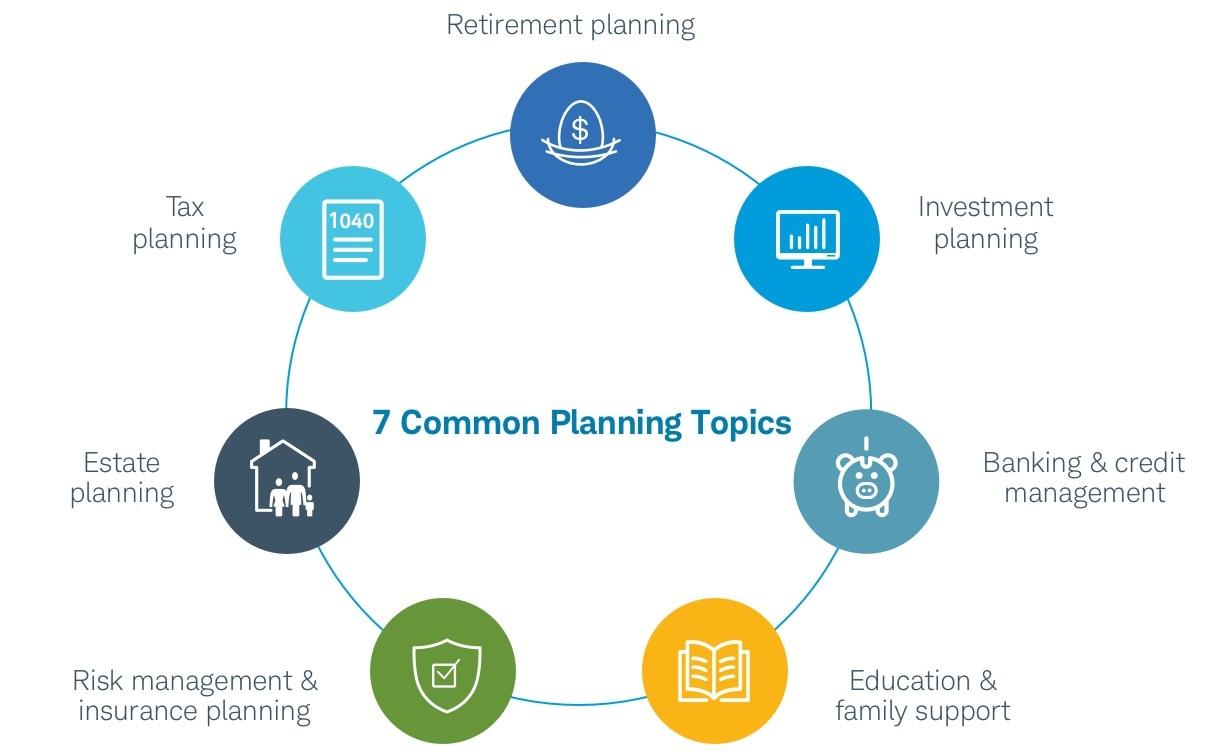
Financial Planning for Families
Effective budgeting is the cornerstone of managing family finances wisely. By keeping track of income and expenses, families can identify areas where they can cut costs without sacrificing quality of life. Here are a few methods to help streamline finances:
- Create a Family Budget: Allocate specific amounts for groceries, entertainment, and savings.
- Embrace Meal Planning: Plan weekly meals using seasonal ingredients to save on groceries.
- Utilize Public Resources: Libraries often provide free access to books, movies, and programs.
- Shop Smart: Use apps to find discounts and coupons for everyday purchases.
Moreover, it’s essential for families to adopt a savings mindset, making small adjustments that accumulate over time. One effective strategy includes setting up a dedicated savings account for emergencies or future expenses. Consider these practical tips:
| Saving Tip | Description |
|---|---|
| Automate Savings | Set up automatic transfers to savings accounts every payday. |
| Join a Community Garden | Grow your own fruits and vegetables to cut grocery bills. |
| Limit Dining Out | Plan a family night each week to cook together instead. |
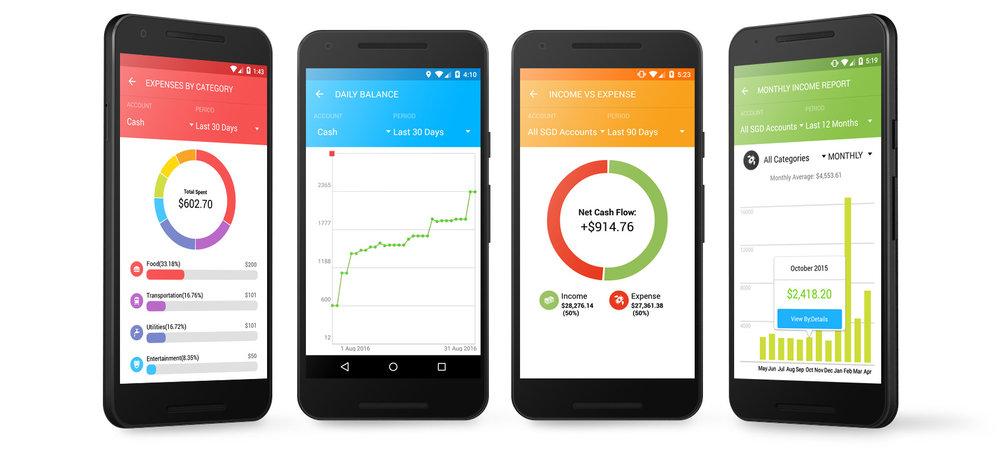
Personal Finance Apps
In today’s digital age, managing your finances doesn’t have to be a daunting task. There are a variety of that can help you track your spending, save money, and even invest wisely. These apps serve as your digital wallet, providing insights into your habits and suggesting areas where you can cut back. Popular options include:
- Mint: Great for budgeting and tracking expenses.
- YNAB (You Need A Budget): Perfect for proactive budgeters.
- PocketGuard: Helps you identify how much disposable income you have.
Using these tools, you can set financial goals, receive reminders for bills, and even establish a savings plan tailored to your lifestyle. By automating your financial management, you ensure that you’re not only aware of your spending patterns but also empowered to make informed decisions. Consider these features when choosing an app:
- User-Friendly Interface: Easy navigation makes tracking fun!
- Customizable Categories: Tailor your budget to fit your needs.
- Security Features: Keep your data safe with encryption.
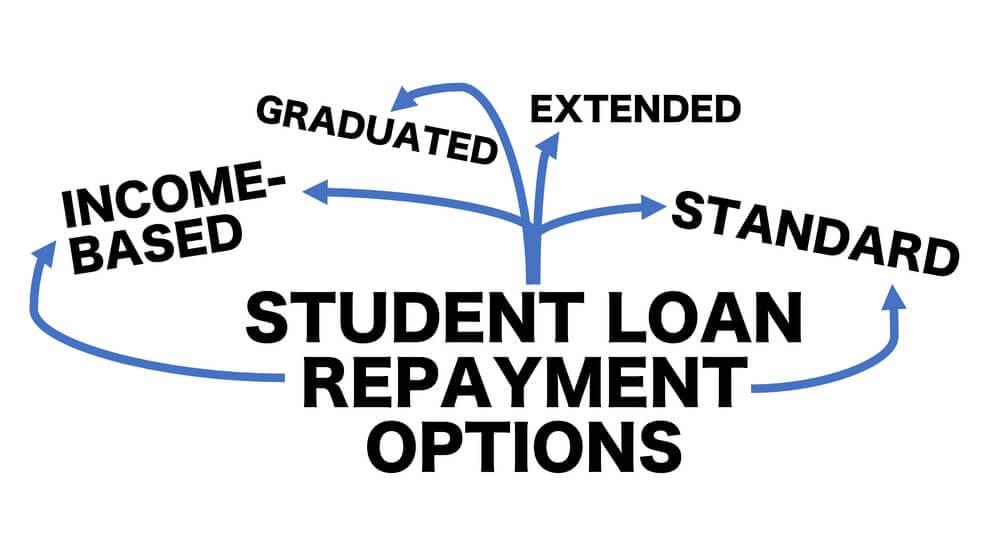
Student Loan Repayment
Managing can seem daunting, but with careful planning and diligence, you can make it a more manageable part of your budget. Consider income-driven repayment plans, which adjust your payments based on your current income levels, providing immediate relief if you find yourself in a tight financial situation. Additionally, explore opportunities for loan forgiveness programs offered for public service positions or if you work in certain professions; these can provide significant long-term benefits. Setting up automated payments can also help you avoid late fees and maintain a consistent repayment schedule.
To save more effectively while repaying your loans, you might consider the following strategies:
- Refinancing your loans to secure a lower interest rate, if eligible.
- Creating a dedicated savings account for loan payments to avoid dipping into your regular budget.
- Using windfalls, like tax refunds or bonuses, to make extra payments on your principal.
By prioritizing your repayments and exploring all available options, you can strategically decrease the amount of interest you pay over time while moving closer to financial freedom.

Debt-Free Journey
Embarking on a journey towards financial freedom often starts with embracing a frugal lifestyle. This mindset fosters not only a healthier relationship with money but also encourages intentional spending habits. To help you along the way, consider incorporating the following strategies into your daily routine:
- Create a Monthly Budget: Track your income and expenses meticulously to understand where your money goes.
- Cook at Home: Preparing meals from scratch saves money and fosters creativity in the kitchen.
- Reduce Subscriptions: Evaluate monthly subscriptions and cut those you rarely use.
- Thrift Shop Finds: Embrace secondhand shopping for clothes and home goods to save significantly.
- Limit Eating Out: Designate a specific budget for dining out and stick to it zealously.
In addition to these habits, regularly assessing your progress can provide great motivation. Consider setting up a simple table to track your savings and debt reduction. This visual representation can be incredibly encouraging as you see your hard work pay off:
| Month | Savings | Debt Paid Off |
|---|---|---|
| January | $200 | $150 |
| February | $250 | $200 |
| March | $300 | $250 |

Credit Card Management
Effective is a cornerstone of frugal living and can significantly impact your financial health. To start, consider implementing a budget that aligns with your spending habits and priorities. Track your expenses regularly to identify areas where you can cut back. Utilizing credit cards wisely can offer lucrative rewards, but it’s essential to pay attention to the interest rates and annual fees. Here are a few strategies that can help you manage your credit cards effectively:
- Pay your balance in full: This helps you avoid interest charges and keep your credit score healthy.
- Set reminders: Use apps or calendar alerts to remind you of due dates, so you never miss a payment.
- Limit the number of cards: Having fewer cards can simplify your management efforts and reduce the temptation to overspend.
- Take advantage of rewards: Choose cards offering incentives that align with your spending habits.
Additionally, regularly reviewing your credit card statements can reveal unexpected fees or unauthorized charges that can affect your budget. Creating a table to compare your credit cards can also help you make informed decisions about which ones to keep or close. Here’s a simple example:
| Credit Card | Annual Fee | Interest Rate | Rewards Rate |
|---|---|---|---|
| Card A | $0 | 14.99% | 1.5% on all purchases |
| Card B | $95 | 13.99% | 2% on groceries |
| Card C | $39 | 15.99% | 1% on all purchases |

Budgeting for Freelancers
Freelancers often navigate the unpredictability of income streams, making budgeting not just a luxury, but a necessity. To thrive financially, consider implementing a zero-based budgeting approach where every dollar is accounted for and assigned a specific role, be it for savings, expenses, or investments. This method helps freelancers track their finances more effectively and reduces the risk of overspending during months of abundance.
In addition to traditional budgeting methods, utilizing digital tools can streamline this process. There are several apps available that can help you manage your finances on-the-go, categorize expenses, and set realistic savings goals. Here are a few useful tips for managing your budget:
- Create a buffer fund: Aim to save at least three months’ worth of living expenses to cover lean periods.
- Separate personal and business expenses: Use different accounts to avoid confusion and to simplify tax reporting.
- Review your budget regularly: Adjust allocations as your income and expenses fluctuate.
| Income Source | Projected Monthly Income | Actual Monthly Income |
|---|---|---|
| Client A | $1,200 | $1,500 |
| Client B | $800 | $400 |
| Side Project | $500 | $600 |
| Total | $2,500 | $2,500 |

Frugal Living Tips
Embracing a lifestyle focused on saving can be both rewarding and liberating. Start by reevaluating your spending habits and prioritizing needs over wants. Consider adopting these simple strategies to help you stretch your budget further:
- Meal Planning: Create a weekly meal plan to minimize impulsive purchases and reduce food waste.
- Thrifting: Regularly visit local thrift stores for clothing and household items at a fraction of retail prices.
- Public Transport: When possible, use public transportation instead of driving to save on gas and parking fees.
- DIY Projects: Engage in do-it-yourself projects to upcycle items you already own instead of buying new ones.
Tracking your spending can provide valuable insights into your financial habits. To make budgeting easier, create a simple table to categorize your expenses. Here’s an example layout:
| Expense Category | Monthly Budget | Actual Spending |
|---|---|---|
| Groceries | $300 | $270 |
| Utilities | $150 | $140 |
| Entertainment | $100 | $80 |
| Transportation | $150 | $120 |
By analyzing your spending through such a table, you can identify where to cut back and allocate funds more effectively, thus supporting a more frugal approach to living!

Side Hustles for Extra Income
In today’s gig economy, there are numerous opportunities for individuals looking to boost their income without a significant time investment. One of the most versatile options is freelancing, which enables you to leverage your skills, whether in writing, graphic design, or programming. Consider platforms like Upwork or Fiverr to connect with clients looking for your expertise. Additionally, if you have a passion for craft-making or art, you can sell your creations on websites such as Etsy or local craft fairs, turning your hobby into a profitable venture.
Pet sitting and dog walking services are also great for animal lovers seeking extra cash. Apps like Rover make it easy to connect with pet owners in your area. If you have a spare room or property, renting it out on platforms like Airbnb can significantly enhance your income. For those who enjoy cooking, consider offering meal prep services or catering for small gatherings. The key to a successful side hustle is to choose something that aligns with your interests and skills, ensuring that the process remains enjoyable and fulfilling.
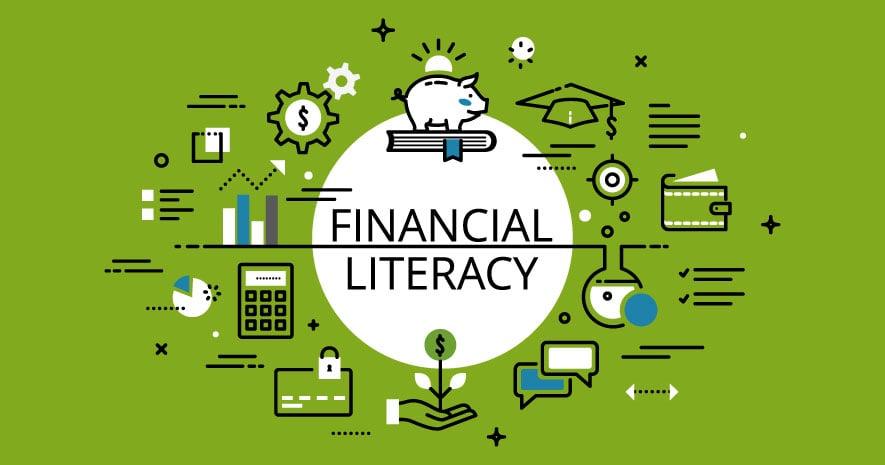
Financial Literacy Education
Understanding personal finance can empower individuals to take control of their spending habits, enabling them to make informed decisions that align with their goals. Instead of aiming for a luxurious lifestyle, consider embracing a mindset focused on sustainability and intentionality in your financial choices. Start by tracking your expenses to identify areas where you can cut back. People often find that subscriptions or memberships they rarely use add up quickly; eliminating even a few can lead to significant annual savings. Here are some simple changes you can incorporate into your routine:
- Cook at home instead of dining out.
- Use public transport to minimize commuting costs.
- Buy in bulk to save on essentials.
To further enhance your financial literacy and cope with common financial pitfalls, consider allocating time to educate yourself on savings strategies and investment basics. Building an emergency fund is crucial; aim for saving at least three to six months’ worth of living expenses. This not only provides a safety net but also reduces reliance on credit. Below is a simple table illustrating potential savings from various everyday choices:
| Expense | Savings Option | Monthly Savings |
|---|---|---|
| Coffee Shop Visits | Brew at Home | -$50 |
| Meal Delivery | Home-Cooked Meals | -$100 |
| Gym Membership | Outdoor Activities | -$30 |

Insurance Planning
When it comes to managing your finances while living frugally, is an essential aspect that often gets overlooked. Taking the time to evaluate your insurance needs can lead to significant savings and greater financial stability. Start by reviewing your current policies, including health, auto, home, and life insurance. Consider these strategies:
- Shop around: Compare quotes from multiple providers to find the best rates.
- Bundle policies: Many insurers offer discounts for bundling multiple policies.
- Increase deductibles: Opting for a higher deductible can lower your premium costs.
- Regular reviews: Assess your coverage annually to adjust for life changes and ensure optimal protection.
Additionally, seek to educate yourself on various coverage options and discounts that may apply to you. For example, a discount for maintaining a safe driving record or for having a security system in place can pile up savings over time. Consider the table below for a quick overview of common insurance discounts that can help you save.
| Type of Insurance | Discount Type |
|---|---|
| Auto Insurance | Safe Driver Discount |
| Homeowners Insurance | Security System Discount |
| Health Insurance | Preventive Care Discount |
| Life Insurance | Healthy Lifestyle Discount |

Long-Term Wealth Building
Building wealth over time is not solely about earning a high income; it’s also about making smart financial choices that lead to long-term stability. One of the most effective strategies is to prioritize saving and investing wisely. Living frugally doesn’t mean sacrificing happiness; it means being conscious of spending habits and making choices aligned with your financial goals. Consider implementing the following practices:
- Automate Savings: Set up automatic transfers to your savings account to ensure you save a portion of your income effortlessly.
- Invest in Yourself: Take free or low-cost courses to enhance your skills, ultimately increasing your earning potential in the long run.
- Eliminate Debt: Focus on paying off high-interest debts first to free up more resources for investments.
Additionally, maintaining a frugal lifestyle enables you to maximize your investment potential. By cutting unnecessary expenses, you free up capital that can be redirected into growth opportunities. Even small savings can accumulate significantly over time. Here’s a simple breakdown of how making modest changes can impact your wealth:
| Expense Reduction | Monthly Savings | Annual Savings | 5-Year Savings |
|---|---|---|---|
| Dining Out Less | $50 | $600 | $3,000 |
| Cancel Unused Subscriptions | $20 | $240 | $1,200 |
| Switch to Generic Brands | $30 | $360 | $1,800 |

Saving for College
Setting aside funds for college can often seem daunting, but with a few strategic adjustments to your everyday spending, it’s entirely achievable. Start by examining your current expenses and identifying areas where you can cut back. Here are some ways to make your budget more college-friendly:
- Limit dining out: Opt for home-cooked meals instead of frequent restaurant visits.
- Cancel unused subscriptions: Regularly review streaming services, magazine subscriptions, and gym memberships.
- Thrift shopping: Explore second-hand stores for clothing and essentials to save money.
Another effective method is to automate your savings. By setting up a separate savings account specifically for college expenses, and scheduling automatic transfers from your main account on payday, you can gradually build a substantial fund without feeling the pinch. Consider the following strategies to enhance your savings:
| Strategy | Monthly Savings Goal |
|---|---|
| Round-Up Savings App | $50 |
| Side gig income | $200 |
| Selling unused items | $100 |
Every little bit adds up, and by instilling these frugal habits now, you’ll create a solid foundation for your future college expenses. Remember, it’s not merely about saving money but also about fostering a mindset that prioritizes long-term goals over immediate wants.

Estate Planning
When it comes to managing your finances wisely, considering your future is crucial. is not just for the wealthy; it’s a necessary aspect of financial management for everyone. By preparing documents like wills, trusts, and advance directives, you not only protect your assets but also ensure your wishes are followed after your passing. Here are some essential tips to keep in mind:
- Start Early: It’s never too soon to begin planning. The earlier you start, the more options you’ll have.
- Prioritize Your Assets: Take inventory of your belongings and determine what needs to be included in your plan.
- Consult Professionals: Seek advice from financial advisors or attorneys who specialize in to make informed decisions.
- Review Regularly: Life changes, such as marriage, having children, or job transitions, may affect your estate plan. Make updates accordingly.
Incorporating a frugal mindset can also play a significant role in effective . By saving money and being mindful of unnecessary expenses, you can allocate more resources toward creating a comprehensive plan. Consider setting up an Excel sheet or a table to track your assets and potential costs associated with :
| Asset Type | Estimated Value |
|---|---|
| Home | $250,000 |
| Retirement Accounts | $50,000 |
| Investments | $30,000 |
By carefully considering your finances and taking the time to plan your estate, you can achieve peace of mind and ensure that your loved ones are taken care of in the future.
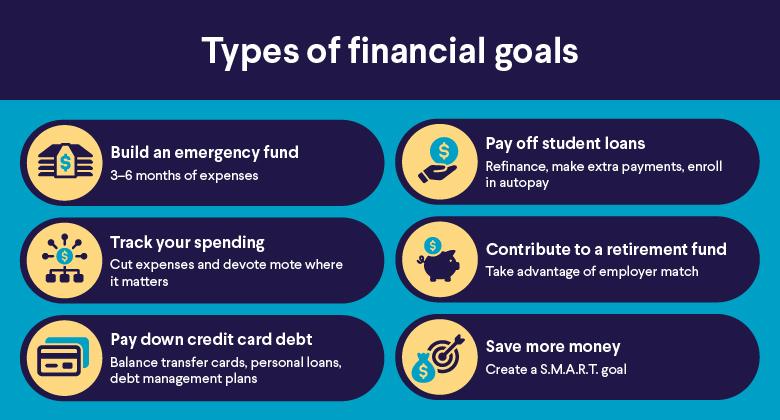
Financial Goals Setting
Setting financial goals is a transformative step towards achieving a more secure financial future. Start by clearly defining your short-term and long-term goals. This might include paying off debt, saving for a vacation, or planning for retirement. To make your goals more specific and actionable, consider employing the SMART criteria—ensuring that each goal is Specific, Measurable, Achievable, Relevant, and Time-bound. For instance, instead of saying, “I want to save money,” you could say, “I want to save $5,000 for a down payment on a house within the next three years.” This clarity will help you identify the steps necessary to reach your objectives while maintaining focus on your frugal living strategies.
Maintaining progress toward your financial goals requires regular tracking and adjustments. A practical way to monitor your journey is to create a monthly budget that aligns with your aspirations. Include your income sources, necessary expenses, and savings targets in a simple table to visualize your financial flow. Likewise, break down your goals into manageable chunks and review your progress weekly. This approach not only keeps you accountable but also instills a sense of achievement as you tick off milestones. Below is a template you can adapt to suit your financial planning:
| Financial Goal | Target Amount | Deadline | Progress (%) |
|---|---|---|---|
| Emergency Fund | $3,000 | 12/31/2024 | 40% |
| Vacation Savings | $1,500 | 06/30/2023 | 70% |
| Retirement Fund | $30,000 | 12/31/2030 | 25% |

Money Management for Couples
Managing finances as a couple requires open dialogue and mutual respect. Start by establishing a shared financial goal, whether it’s saving for a dream vacation or building a home. This creates a sense of partnership and aligns your spending habits. Regular discussions about your budget, expenses, and income will help you both stay on the same page. Utilize financial tools and apps to track your spending and savings in real-time, ensuring transparency and engagement in the process.
Consider creating a joint budget, where you outline your combined income, fixed expenses, and discretionary spending. This will make it easier to see where you can cut back and save. Moreover, set aside a small monthly “fun” budget for spontaneous activities. This not only allows for enjoyment but also keeps the experience light and free from the pressure of financial strain. To assist in planning, here’s a simple table that outlines potential budget categories:
| Category | Percentage of Income |
|---|---|
| Housing | 30% |
| Utilities | 10% |
| Groceries | 15% |
| Transportation | 10% |
| Fun/Miscellaneous | 10% |
| Saving/Investing | 25% |

Family Budgeting
Establishing a solid family budget is essential for achieving long-term financial stability. It allows you to track your income and expenses, ensuring that every dollar has a purpose. To create an effective budget, start by gathering all financial information, including pay stubs, bills, and receipts. Categorize your spending into essentials versus non-essentials, which can help in identifying areas where savings can be maximized. Consider the following key steps:
- Set clear financial goals: Whether it’s paying off debt or saving for a vacation, having specific targets can motivate the entire family.
- Involve the family: Engage all family members in the budgeting process to promote accountability and shared responsibility.
- Regularly review and adjust: Life changes, such as new jobs or unexpected expenses, should prompt a review of the budget.
One useful tool for effective budgeting is a simple table to monitor monthly expenses versus income. This visual aid can reveal trends in spending and highlight areas for potential savings. Below is a sample layout that can be adapted for your monthly needs:
| Category | Budgeted Amount | Actual Amount | Difference |
|---|---|---|---|
| Groceries | $400 | $350 | +$50 |
| Utilities | $200 | $210 | -$10 |
| Entertainment | $150 | $100 | +$50 |
| Savings | $300 | $300 | $0 |

Smart Spending Habits
To cultivate a lifestyle centered around financial mindfulness, it’s crucial to adopt spending habits that prioritize value over impulse. Embrace the art of making intentional choices with each purchase you consider. Before splurging on an item, ask yourself these pivotal questions:
- Do I really need this? – Distinguish between wants and needs.
- Can I wait? – Delaying gratification can reduce impulse buys.
- Are there cheaper alternatives? – Explore options that offer the same benefit at a lower price.
Additionally, keeping your eye on long-term goals fosters responsible spending. Use budgeting apps or spreadsheets to track your expenses meticulously. This not only helps in identifying unnecessary expenditures but also instills accountability. Consider creating a simple table to visualize your spending versus savings:
| Item | Cost | Necessity | Alternatives Considered |
|---|---|---|---|
| Coffee Shop Visits | $20/week | Enjoyable, but not essential | Home-brewed coffee |
| Streaming Services | $15/month | Entertainment | Library movies |
| Gym Membership | $50/month | Health but can be replaced | Outdoor workouts |
By regularly assessing your expenditures and maintaining a disciplined approach to spending, you can allocate funds towards savings and investments that enrich your life without compromising your financial future.
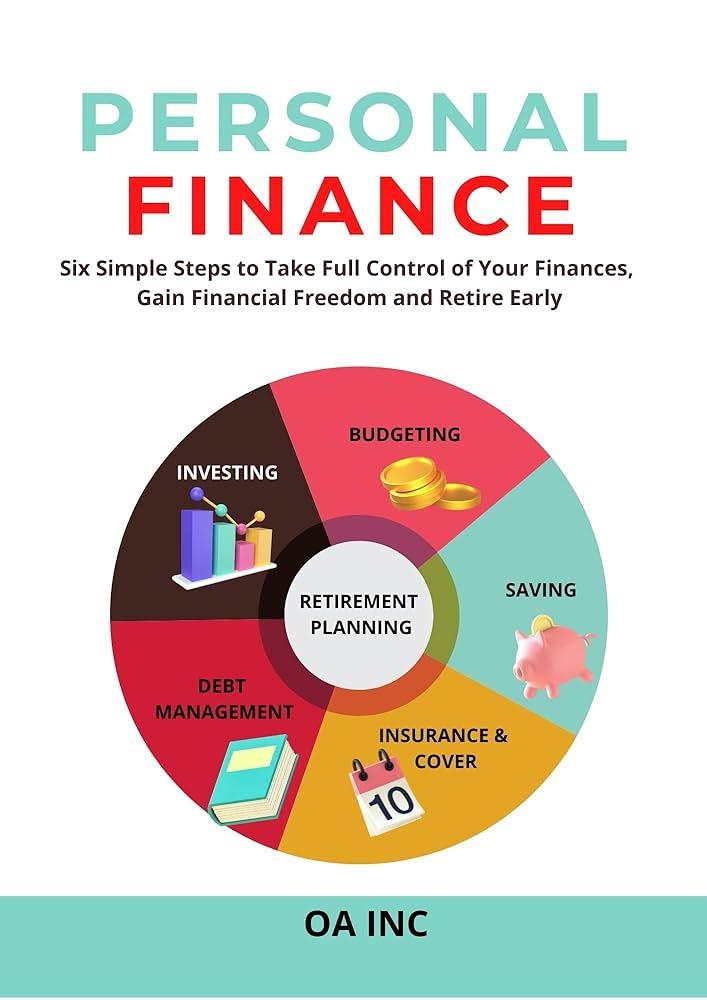
Personal Finance for Millennials
Embracing a lifestyle of frugality isn’t just about saving pennies; it’s about rethinking your spending habits and discovering the joy in simplicity. Start by evaluating your monthly subscriptions and memberships. Are there any services you rarely use? Cutting out just one or two can free up significant funds for more meaningful experiences. Here are some strategies to help you save:
- Meal Prep: Plan your meals for the week and buy in bulk to reduce food costs.
- DIY Projects: Tackle home improvements and repairs yourself instead of hiring out.
- Second-Hand Shopping: Explore thrift stores or online marketplaces for gently used items.
Another powerful way to adopt a frugal lifestyle is to rethink major purchases. Before whisking away to the nearest mall, consider some alternative approaches for acquiring what you need. For example, instead of purchasing the latest tech gadgets, explore trade-in programs or refurbished options. You can also optimize your budget by utilizing tools like comparison shopping apps. Below is a simple comparison of options for common expenses:
| Expense | Traditional Option | Frugal Alternative |
|---|---|---|
| Gym Membership | $50/month | Free YouTube Workouts |
| Coffee Shop Visit | $5/day | Home-Brewed Coffee |
| New Clothes | $100/month | Thrift Store Finds |

Wealth Preservation Strategies
Maintaining and growing your assets requires a thoughtful approach to managing your resources. Adopting frugal living practices can significantly enhance your wealth preservation efforts while allowing you to live comfortably. Consider the following strategies that can help you keep more of your hard-earned money:
- Create a Budget – Draft a detailed budget that tracks income and expenses, ensuring you identify areas where you can cut unnecessary costs.
- Emergency Fund – Establish a well-funded emergency savings account to provide financial security during unexpected events.
- Invest Wisely – Focus on low-cost investment options like index funds or ETFs to minimize fees and maximize returns.
- Shop Smart – Leverage discounts, cashback apps, and bulk-buying deals to get the best value on purchases.
It’s essential to adopt a mindset of continuous improvement when it comes to financial habits. The following table outlines some practical frugal living tips that can contribute to effective wealth preservation:
| Tip | Description |
|---|---|
| Meal Planning | Plan weekly meals to reduce food waste and save money on groceries. |
| DIY Projects | Take on do-it-yourself home improvement projects to avoid paying for labor. |
| Buy Used | Thrift or buy second-hand items to save money without sacrificing quality. |
In Conclusion
In a world that often equates happiness with abundance, the art of frugal living stands as a gentle reminder that fulfillment doesn’t hinge on material wealth. By embracing simplicity and mindful spending, we not only stretch our budgets but also carve out space for richer experiences, deeper connections, and a more sustainable lifestyle. As you embark on your own frugal journey, remember that every small change can lead to significant savings and a clearer path to your personal goals. Whether you’re saving for a dream vacation, paying down debt, or simply looking to live more intentionally, the tips shared in this article can serve as building blocks on your way to financial freedom. So, take a moment to reflect on what truly matters, and let your frugal practices guide you toward a more intentional life—one where creativity, resourcefulness, and gratitude take center stage. Here’s to a more meaningful way of living, one frugal tip at a time!



